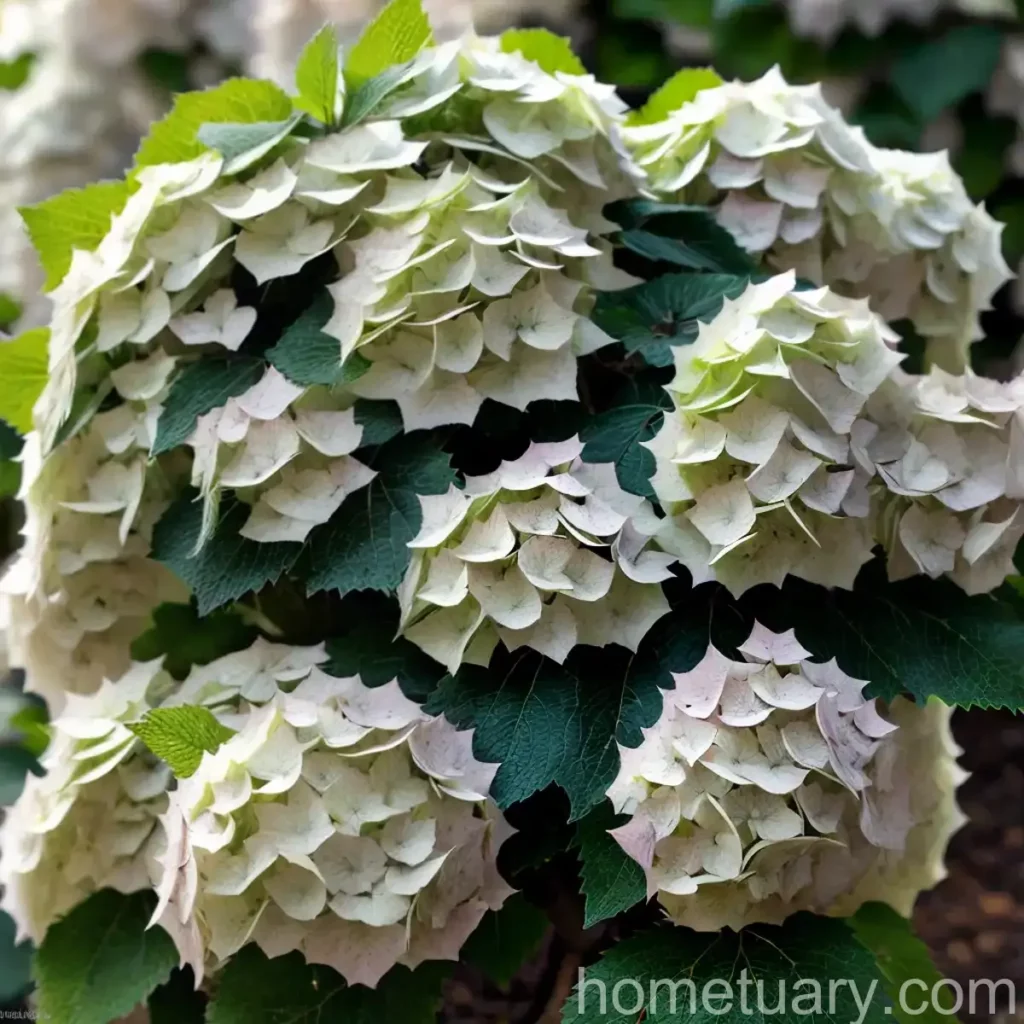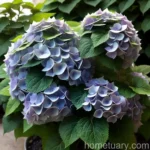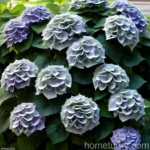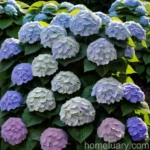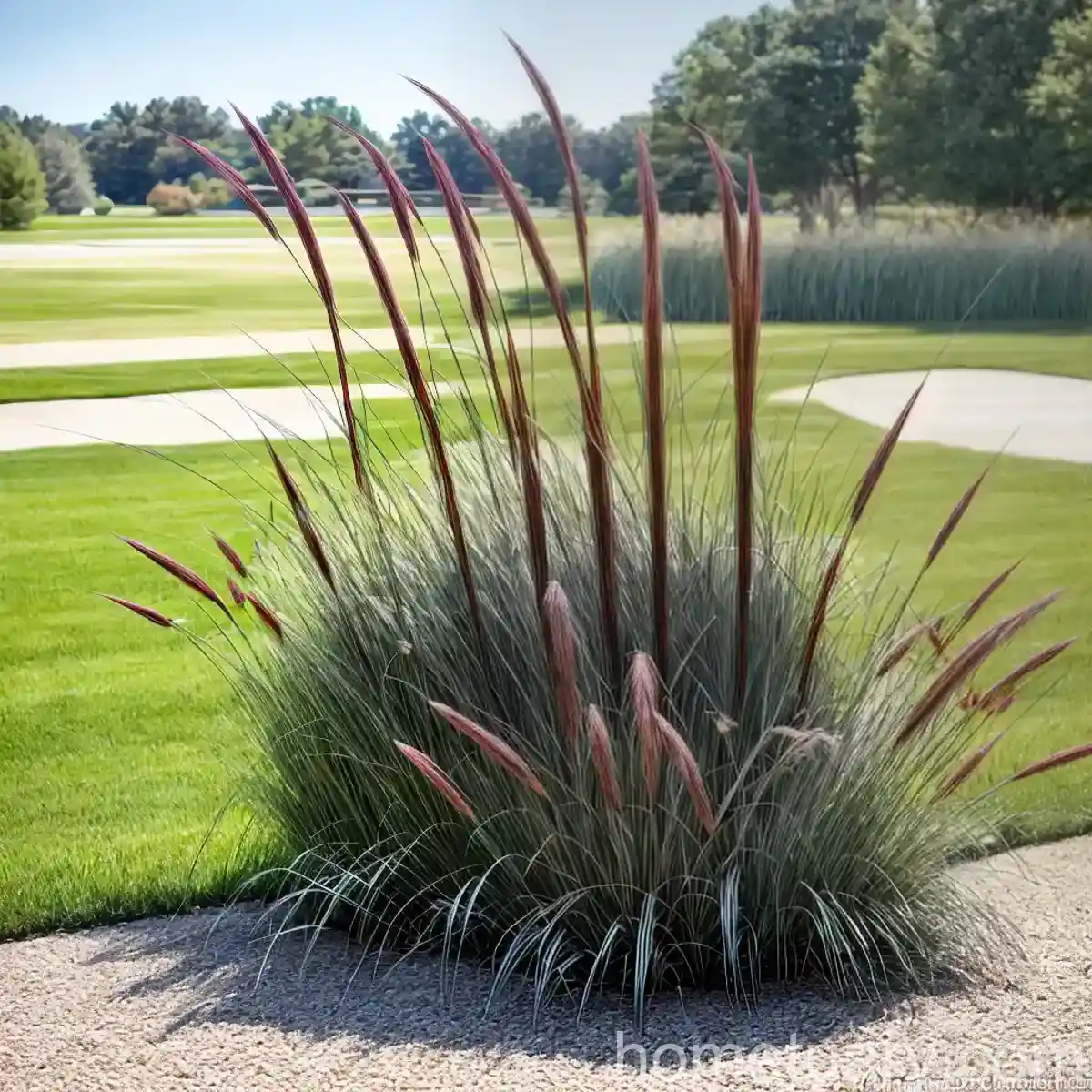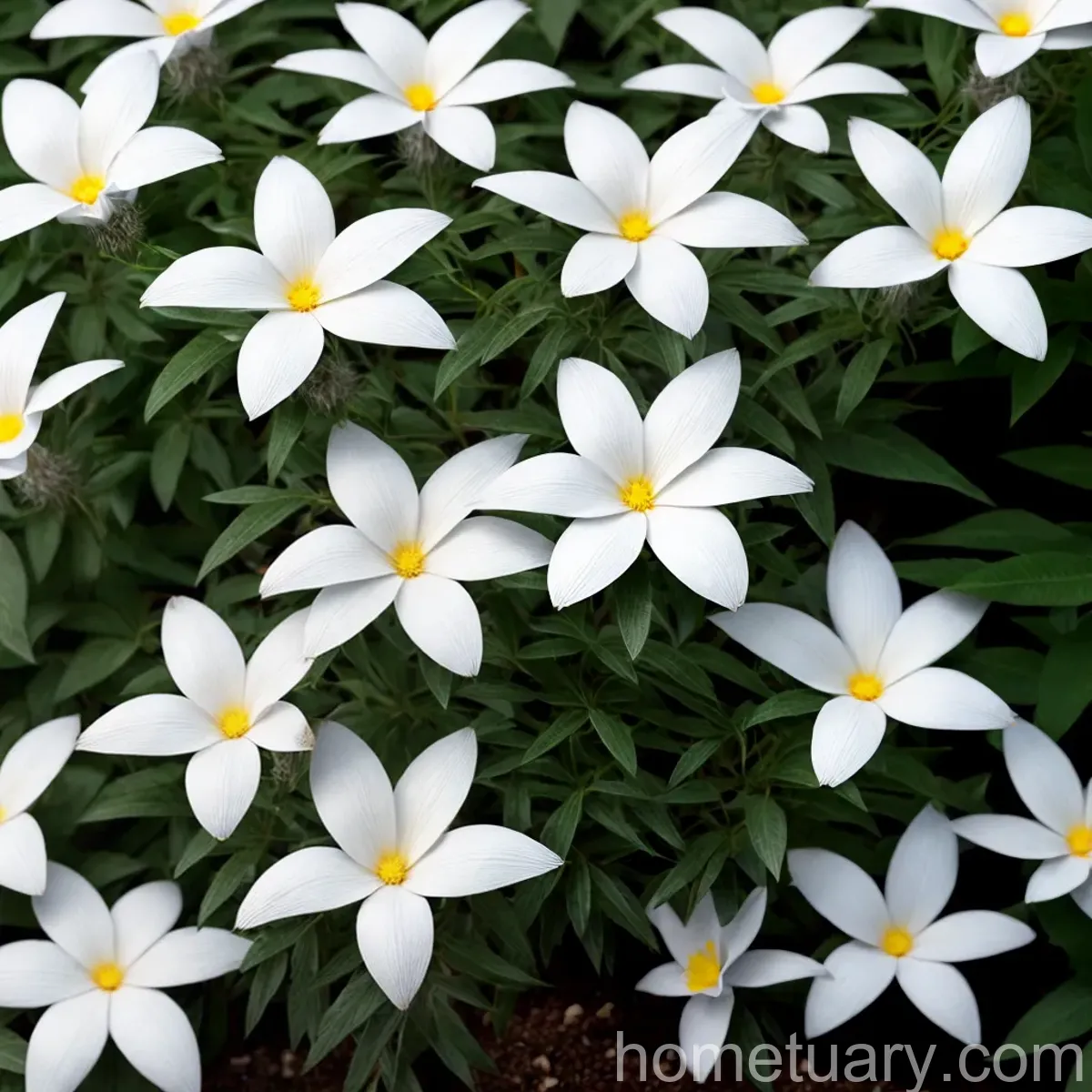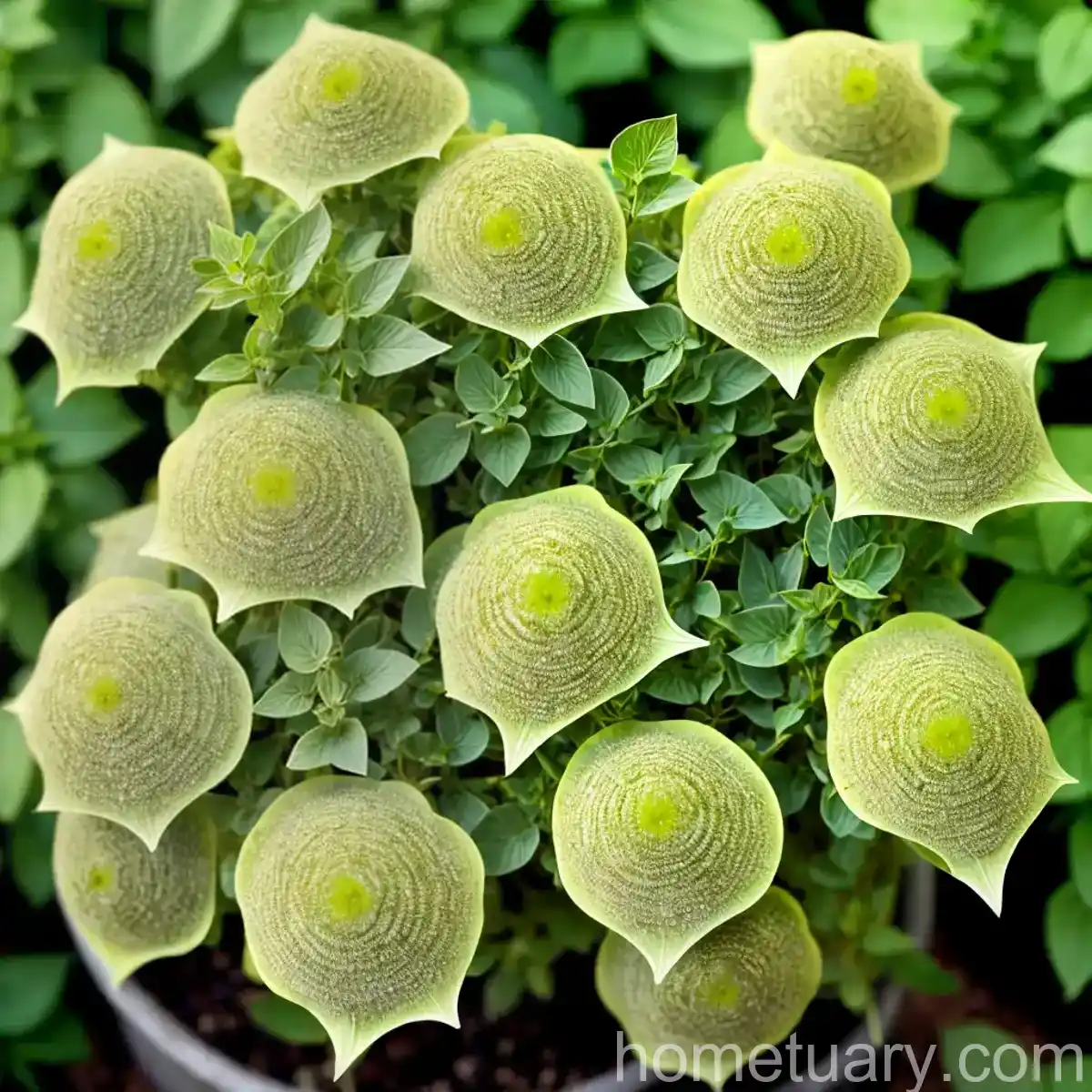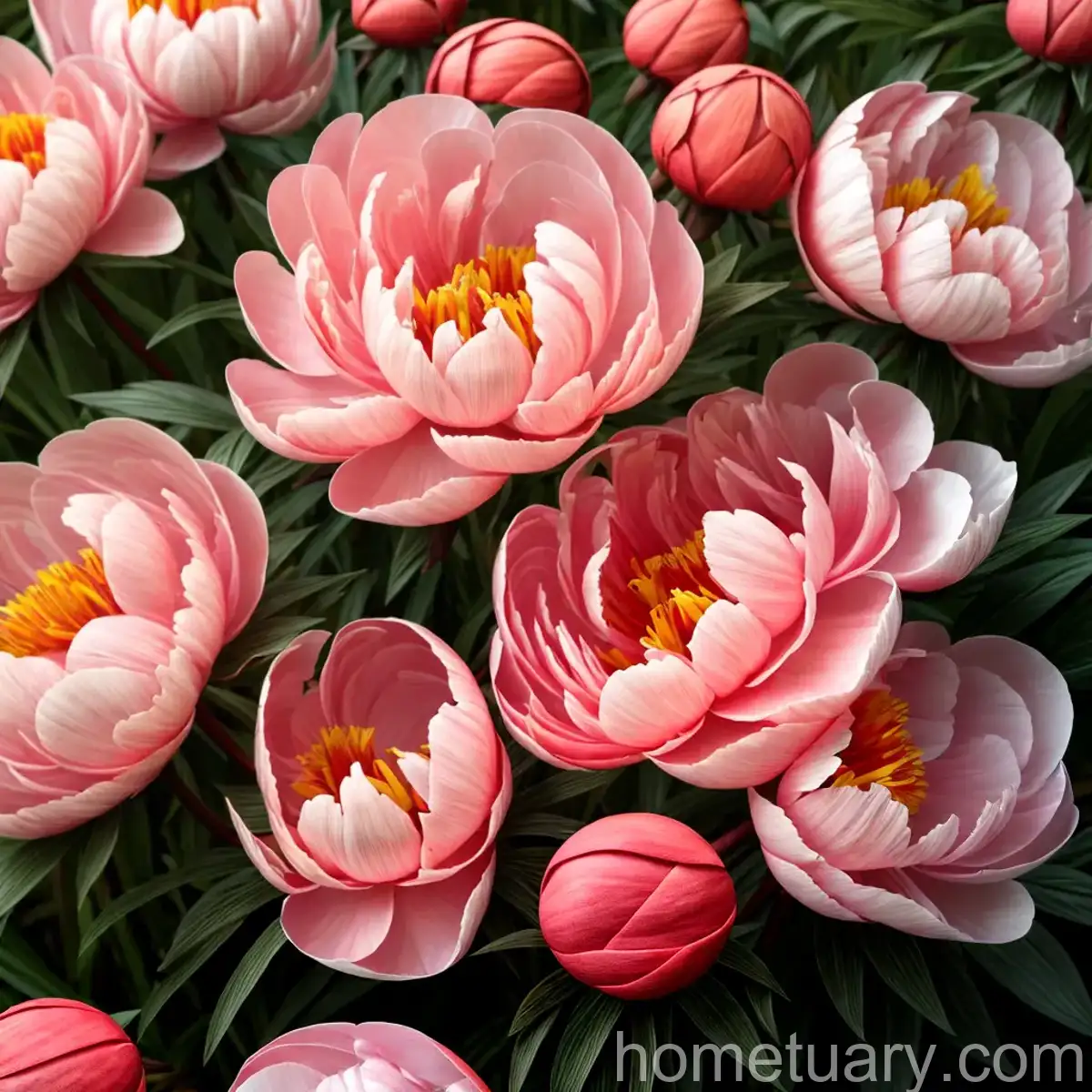Oakleaf Hydrangea (Hydrangea quercifolia ‘Munchkin’): A Complete Guide

Oakleaf Hydrangea, scientifically known as Hydrangea quercifolia ‘Munchkin,’ is a captivating and versatile shrub that has gained popularity among gardeners for its stunning visual appeal and low maintenance requirements. This compact, dwarf variety of the native oakleaf hydrangea offers an array of horticultural and aesthetic benefits, making it an excellent addition to landscapes and gardens.
In this comprehensive guide, we will explore all facets of the oakleaf hydrangea ‘Munchkin,’ covering its culture, uses, maintenance requirements, common diseases and pests, as well as tips from botanists and intriguing facts about this fascinating plant.
What is Oakleaf Hydrangea (Hydrangea quercifolia ‘Munchkin’)?
Oakleaf hydrangea ‘Munchkin’ belongs to the Hydrangeaceae family and is a compact, deciduous flowering shrub renowned for its distinctive oak-like foliage, cone-shaped flower clusters, and attractive exfoliating bark. It is a cultivar of the native oakleaf hydrangea (Hydrangea quercifolia) and is prized for its compact size, making it a versatile choice for smaller gardens, urban landscapes, and container gardening.
Key Takeaways – Oakleaf Hydrangea (Hydrangea quercifolia ‘Munchkin’)
- Scientific Name: Hydrangea quercifolia ‘Munchkin’
- Common Name: Oakleaf hydrangea ‘Munchkin’
- Family: Hydrangeaceae
- Type: Deciduous flowering shrub
- Characteristics: Compact, dwarf variety with oak-like foliage and cone-shaped flower clusters
- Uses: Landscaping, gardens, urban landscapes, container gardening
- Maintenance: Low maintenance with minimal pruning requirements
- Special Features: Stunning fall foliage, exfoliating bark, and attractive flowers
Now, let’s delve deeper into the various aspects of this remarkable plant, including its culture, uses, maintenance requirements, and horticultural characteristics.
Culture
Cultivating oakleaf hydrangea ‘Munchkin’ involves understanding its specific cultural requirements, including water, sunlight, soil, and fertilizer needs. By providing the ideal growing conditions, gardeners can ensure the optimal health and vitality of this beloved shrub.
Water
Proper watering is crucial for the health and growth of oakleaf hydrangea ‘Munchkin.’ While it is essential to keep the soil consistently moist, it is equally important to avoid waterlogged conditions, as excessive moisture can lead to root rot and other water-related issues. During the growing season, regular deep watering, especially during dry periods, will support healthy foliage and flower production.
Sunlight
Oakleaf hydrangea ‘Munchkin’ thrives in partial shade to full sun, making it adaptable to a wide range of light conditions. When planted in a location with dappled sunlight or partial shade, the plant can benefit from protection against harsh midday sun while still receiving ample light for optimal growth. However, it is worth noting that adequate sunlight is essential for robust flowering and overall vigor.
Fertilizer
Optimizing the soil nutrient levels through the application of balanced fertilizers can enhance the growth and blooming performance of oakleaf hydrangea ‘Munchkin.’ A slow-release, organic fertilizer formulated for acid-loving plants, such as azaleas and rhododendrons, can be applied in spring before new growth emerges.
Soil
The choice of soil plays a significant role in the successful cultivation of oakleaf hydrangea ‘Munchkin.’ Well-draining, acidic soil with a pH range of 5.2 to 5.5 is ideal for this plant, as it mimics the natural woodland habitat where it thrives. Amending the soil with organic matter, such as compost or leaf mold, can improve its texture and fertility, providing an optimal growing medium for the shrub.
Pruning
Pruning is an important aspect of oakleaf hydrangea ‘Munchkin’ care, as it contributes to maintaining a tidy growth habit, promoting flowering, and rejuvenating the plant. However, this compact variety typically requires minimal pruning, as its naturally compact form and manageable size reduce the need for extensive shaping or size control.
Propagation
Oakleaf hydrangea ‘Munchkin’ can be propagated through several methods, including softwood cuttings, hardwood cuttings, and division. Softwood cuttings, taken from the current season’s growth, can be rooted in a well-draining propagation medium and kept in a warm, humid environment to encourage root development. Hardwood cuttings, harvested during the dormant season, can also be used for propagation, while division of established plants is another option for multiplying this captivating shrub.
Container Popularity
The compact size and visually appealing characteristics of oakleaf hydrangea ‘Munchkin’ make it well-suited for container gardening. Its adaptability to container growth allows gardeners with limited space to enjoy the beauty and elegance of this hydrangea variety on patios, balconies, and small outdoor spaces.
Uses
Landscaping
Oakleaf hydrangea ‘Munchkin’ is a versatile landscaping plant that can be used in various design applications, such as:
- Mixed Borders: Its compact size and stunning foliage and flowers make it an excellent addition to mixed borders, where it can complement other flowering shrubs, perennials, and ornamental grasses.
- Foundation Plantings: The shrub’s tidy growth habit and year-round visual interest make it an ideal candidate for foundation plantings, adding charm and elegance to the landscape.
- Woodland Gardens: With its affinity for partial shade and woodland-like conditions, oakleaf hydrangea ‘Munchkin’ thrives in woodland gardens, where it contributes to the naturalistic beauty of the setting.
Container Gardening
In addition to its landscape uses, the compact nature of oakleaf hydrangea ‘Munchkin’ makes it an excellent choice for container gardening, serving as a focal point in outdoor spaces, such as patios, terraces, and balconies.
Common Diseases
While oakleaf hydrangea ‘Munchkin’ is generally resistant to many common plant diseases, it is important to monitor its health and address any issues promptly. Some potential diseases that may affect this shrub include:
- Powdery Mildew: A fungal disease that can cause a white powdery coating on the foliage, affecting its overall health and appearance.
- Cercospora Leaf Spot: Characterized by brown or purplish spots on the leaves, this fungal disease can lead to defoliation if left untreated.
- Botrytis Blight: This fungal disease can cause gray mold on flowers and foliage, impacting the plant’s aesthetics and vitality.
Disease Diagnosis
In the event of suspected disease issues, accurate diagnosis is crucial for implementing effective control measures. By closely inspecting the symptoms and seeking professional guidance, gardeners can identify the specific disease affecting the plant and take appropriate steps to address it.
Common Pests
Oakleaf hydrangea ‘Munchkin’ is relatively resistant to many common garden pests; however, it may occasionally encounter pest-related challenges. Some potential pests that may infest the shrub include:
- Aphids: Small, sap-sucking insects that can distort new growth and cause honeydew buildup, leading to sooty mold issues.
- Scale Insects: These pests can appear as small, immobile bumps on the stems and leaves, sapping the plant’s resources and weakening its vitality if left unchecked.
Botanist’s Tips
Optimal Planting Time
Planting oakleaf hydrangea ‘Munchkin’ during the cooler months of early spring or fall allows the shrub to establish its root system with minimal stress from heat and sunlight. This optimal planting time sets the stage for vigorous growth and abundant flowering in subsequent seasons.
Mulching Benefits
Applying a layer of organic mulch around the base of the shrub provides numerous benefits, including moisture retention, weed suppression, and soil insulation. Additionally, the gradual decomposition of the mulch contributes organic matter to the soil, enhancing its fertility and structure.
Seasonal Pruning Guidelines
Pruning oakleaf hydrangea ‘Munchkin’ immediately after flowering allows for the removal of spent blooms and any necessary shaping while minimizing the risk of interfering with the following year’s flower buds. By adhering to seasonal pruning guidelines, gardeners can maintain the shrub’s compact form and promote healthy growth.
Fun Facts
- Oakleaf hydrangea ‘Munchkin’ is a native plant of the southeastern United States, where it thrives in woodland edges, stream banks, and moist, acidic soils.
- The name “quercifolia” is derived from the Latin words “quercus” (oak) and “folium” (leaf), aptly describing the shrub’s foliage resemblance to that of an oak tree.
- In addition to its captivating flowers, this hydrangea variety is prized for its stunning fall foliage, which transitions to vibrant shades of red, orange, and burgundy, adding to its ornamental appeal in the autumn landscape.
Links to External Resources
- University of Missouri Extension – Hydrangea quercifolia: Oakleaf Hydrangea
- Clemson Cooperative Extension – Hydrangea quercifolia: Oakleaf Hydrangea
- The Morton Arboretum – Hydrangea quercifolia
- North Carolina State University Extension – Hydrangea quercifolia: Oakleaf Hydrangea
By providing a comprehensive overview of the culture, uses, maintenance requirements, and unique attributes of oakleaf hydrangea ‘Munchkin,’ this guide aims to equip plant enthusiasts and gardeners with the knowledge needed to cultivate and appreciate this captivating shrub in their outdoor spaces. Whether used as a landscape focal point, a charming container specimen, or a versatile addition to mixed plantings, the compact oakleaf hydrangea ‘Munchkin’ continues to enchant with its stunning features and ease of care.

